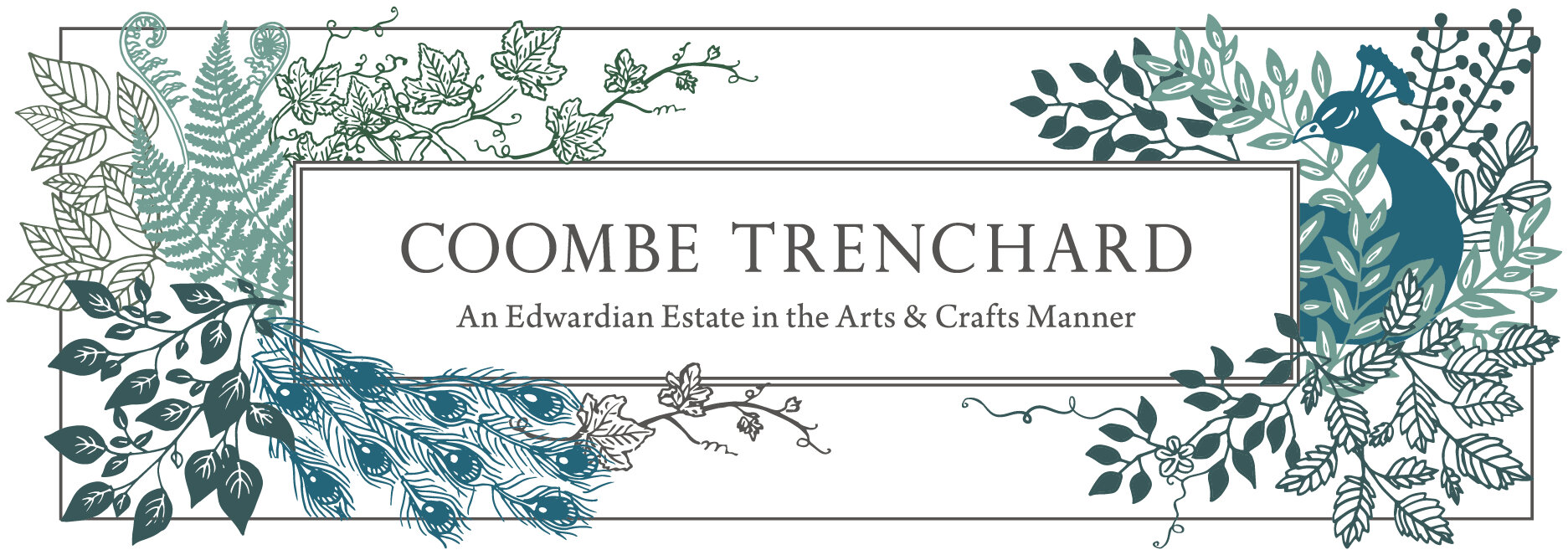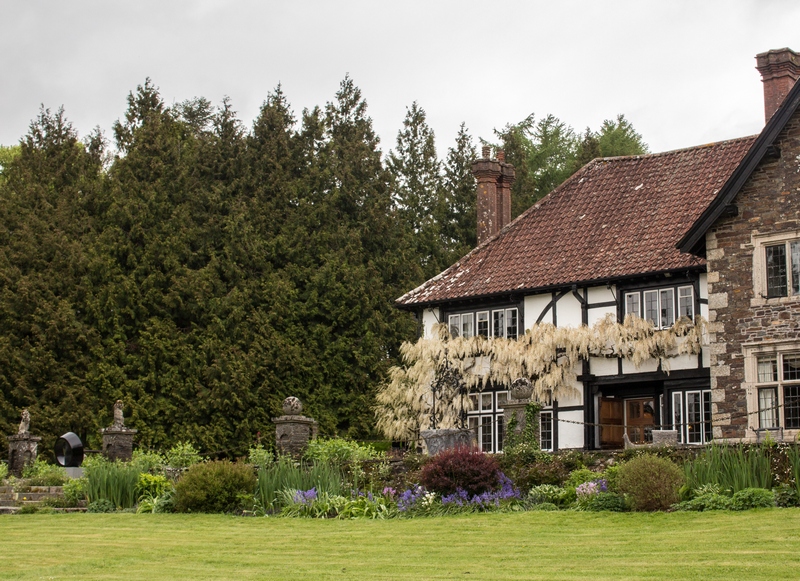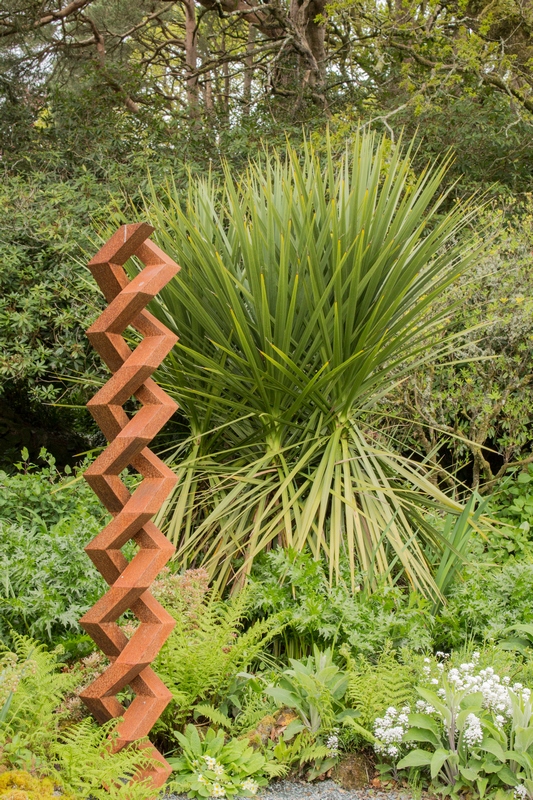This months blog from Ben Probert looks not only at how the gardens are bursting into life, but also the impact that garden sculpture has on the gardens.
May is a month of contrasts; at the beginning of the month it is still decidedly spring, with frost a real risk, but by the end of the month it's all but summer and plants are growing at incredible speed. It's a busy month for gardeners as lawns and borders grow quickly, and it's easy for them to get out of hand it they're not monitored carefully. May brings warmer temperatures but usually lots of rain (certainly here in Devon!), so mowing goes from being an occasional job to being a regular part of a gardener's routine in a matter of a week!
May brings the highlight of the the horticultural year; the Royal Horticultural Society's Chelsea Flower Show attracts interest from all over the world, with nurseries, designers and other garden companies come together for a horticultural extravaganza on the lawns of the Royal Hospital, Chelsea. Actually getting to Chelsea can prove quite expensive, so most people take in the sights and sounds by watching the BBC's coverage. Whether you can be at Chelsea in person or in spirit, Chelsea week is also the time to do a very important garden job; the 'Chelsea chop'! Certain plants might flower earlier than wanted, so these plants are sheared back during Chelsea week, causing them to regrow and then flower a few weeks later. Certain Geraniums, Salvias, Asters and several other plants are perfect for the Chelsea chop, and it's a great way to make sure that you get a big display in your borders from June onwards, instead of having a few plants flowering at a time.
The borders at Coombe Trenchard are certainly very healthy, and I put this down to a combination of the use of the right plants and a liberal dose of 'Coombe Trenchard gold', the fantastic home-brewed compost made from manure, green-waste and woody material. Most gardeners know about composting but a surprising number don't do it. Reasons include lack of space, lack of time (because composting does take a degree of time and effort) and the convenience of being able to buy a bag or two of compost as and when it's needed. A garden like the one at Coombe Trenchard generates a large amount of organic matter, and this is definitely not wasted! By the time the manure and organic matter has composted properly it's turned into a wonderfully rich, nutritious and bulky material, and this home made compost is absolutely fantastic for getting plants growing at their very best
The borders and Wisteria bursting into life
A nice billowy mass of fresh growth and flowers is always a delight to see, but gardens are often left lacking... something. It can be hard to put your finger on it, but all too often what's needed is a man-made element to anchor and balance the exuberant planting. Installing something like a bench, a sculpture or even a bird bath can really change a garden; you put a feature into a planted area and the feature somehow manages to make the planting seem more rich and vibrant, while the planting also frames and shows off your feature. It's a strange illusion, but somehow the whole becomes more than the sum of its parts.
The right choice of a garden feature is critical, and it's a decision that is best thought about before taking the plunge. What colour? What would look right? How tall? How wide...? Time and time again I've seen gardens where budget has been a constraint, but the garden has been filled (and sometimes I mean filled) with smaller, cheaper sculptures and statues that just don't suit the space, and I'm left wondering if the money had been saved and spent on something more appropriate.
Coombe Trenchard is currently hosting its sculpture exhibition, and I would strongly advise that gardeners take a look. Although the exhibits are most definitely works of art in their own right, displayed using the garden as a 'green gallery', their placement in the garden really shows the importance of 'right sculpture, right place'. Take, for example, this piece below...
Pelham System by Julian Wild
This sculpture is made of rusting pipes, but this is not simply a pile of rusty old metal! The shapes, scale and colour of this piece look very industrial and unashamedly man-made, but sitting in a sea of wildflowers it looks fantastic. This sculpture would, certainly to my eyes, look rather drab in surrounded by concrete or indoors, but surrounded by the wildflowers it sits comfortably in its surroundings. Although surprisingly big it's not bulky, and is in fact the perfect size and scale for this part of the garden. A smaller piece here in the woodland would simply look small and out of place, and something big and bulky would dominate the wildflowers. It's a balancing act to get the right proportions, but it's definitely something worth the effort of getting right.
We come from Heaven, I from Hell 2012 by Robert Philips
This example above works on a smaller scale; this tall sculpture acts as a perfect accent to the Cordyline australis behind, while low planting around its base acts to balance the height and wide of the piece itself. The sculpture and the planting both compliment each other perfectly. I don't want to spoil the fun of seeing these sculptures for yourself, so this is my final example. The Irish yews (Taxus baccata 'Fastigiata') in the yew avenue are tall and upright, and in the fairly long and narrow space between them a low and wide sculpture would have the wrong proportions. Take a small sculpture and put it on a nice tall plinth and you have a piece that sits comfortably in its surroundings.
You can combine art and comfort and go for a nice garden bench.... This bench is in Coombe Trenchard's woodland garden and is certainly not the kind of thing you see in your local garden centre or DIY store! It has to be big because it's in a big space, so a smaller bench would just get lost in this part of the garden. A high back allows this bench to be seen but also makes a sitting place into a visually striking feature. There's something very appealing about this bench; it's solid but also looks incredibly inviting. Where space and budget allow, a bench with character and substance could act as your principle seating and also as an artistic focal point.
Big Bench by Chris Amey
You can use plants themselves as sculptures; gardeners have been using plants to create topiary sculptures for centuries! You don't have to be wild and outrageous with your topiary, even something as simple as a shape made from box (Buxus sempervirens) can be the perfect sculptural element for your garden. The rule of thumb here is the same as with sculptures made of any other material; be bold! A small clipped shape in a big space will disappear as quickly as a small statue would, so plan for your masterpiece to grow to a reasonable size. You might have to plant several of one thing to get you the effect in a sensible time, and your living sculpture will need clipping and shaping regularly to keep it looking good. It's important to bear in mind that, even if you buy fairly large plants to grow and clip, creating your own topiary sculpture of any meaningful size takes time, so if you want something big and bold now you might be better finding yourself an artist...!
These shapes look great in long grass but have taken a long time to get this big!
By Ben Probert Penandtrowel.co.uk
Sculptural15 runs until June 20th, opening from Wednesday - Saturday 11am-5pm (closed June 6th for private event)


